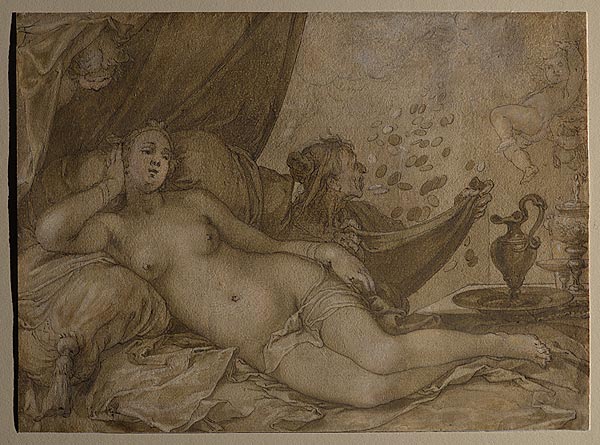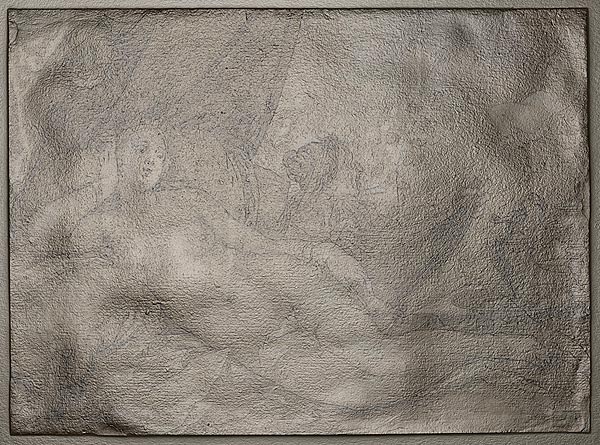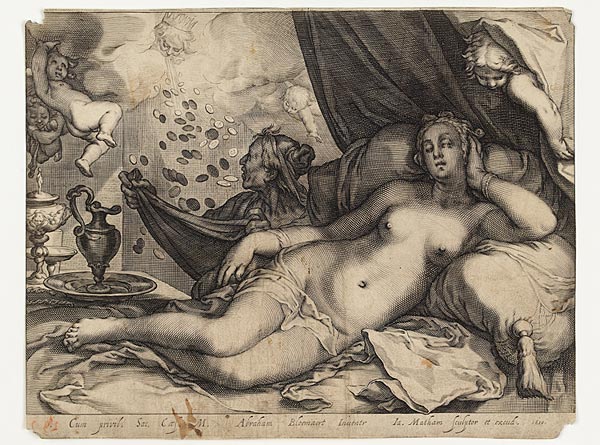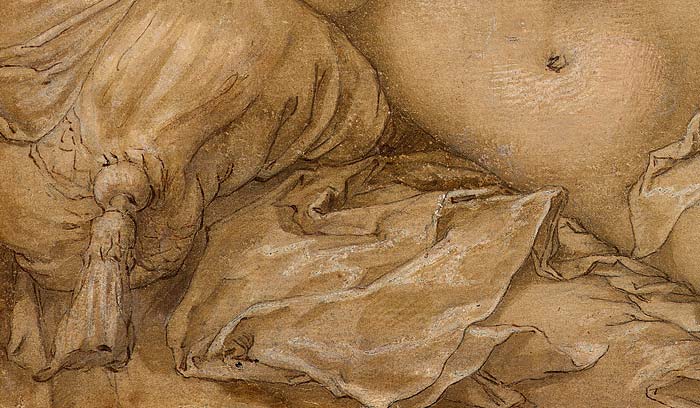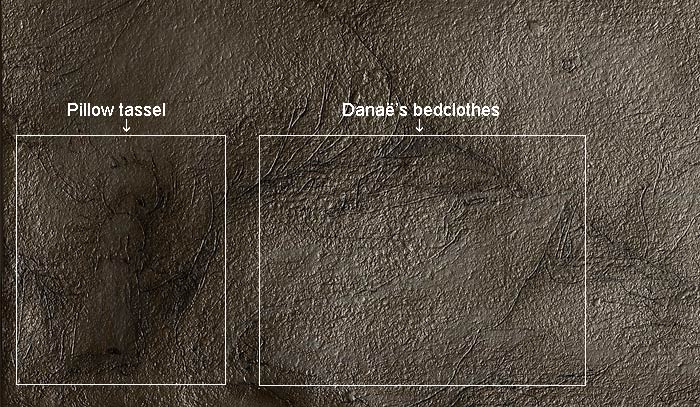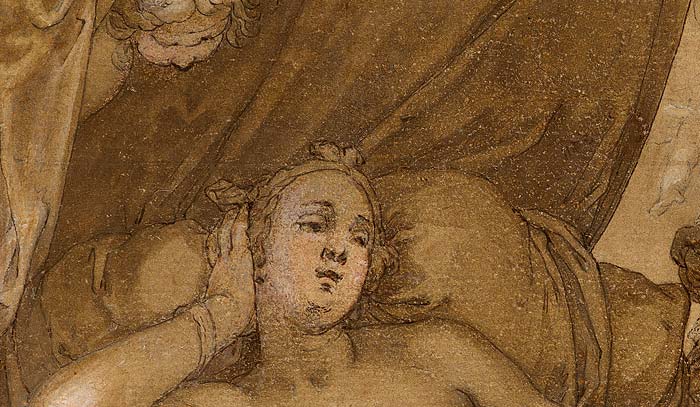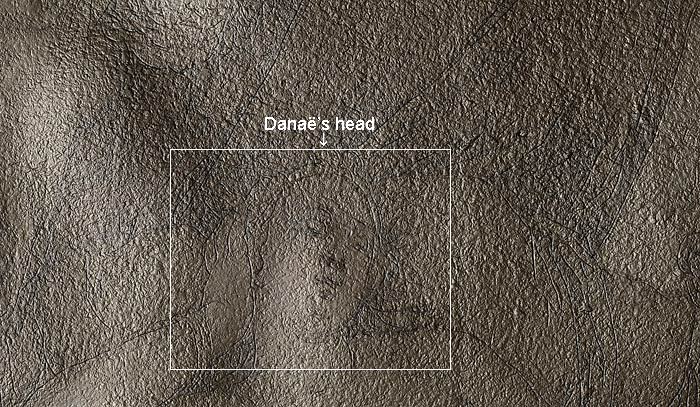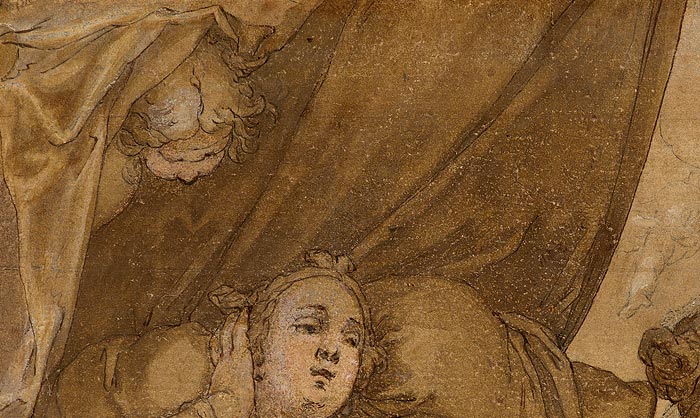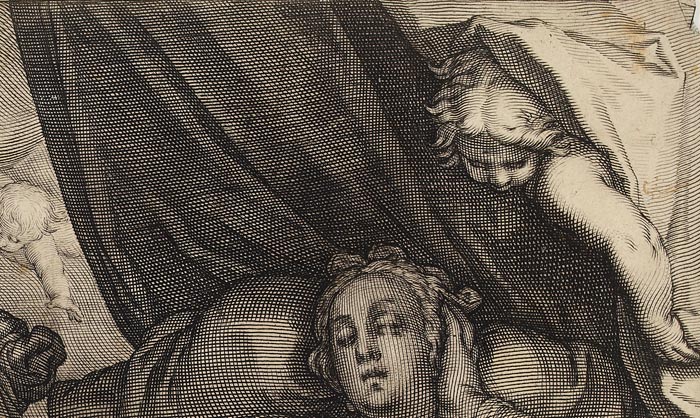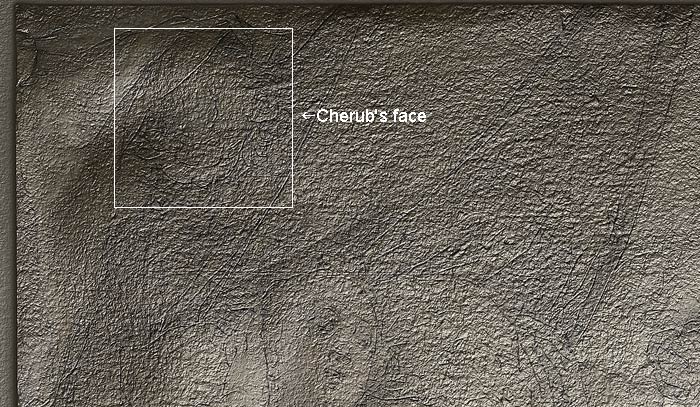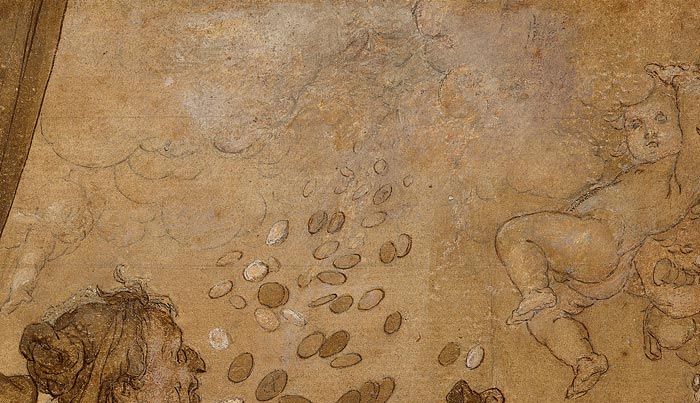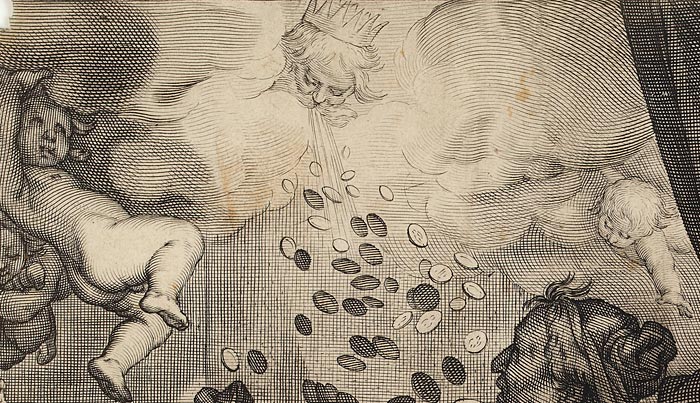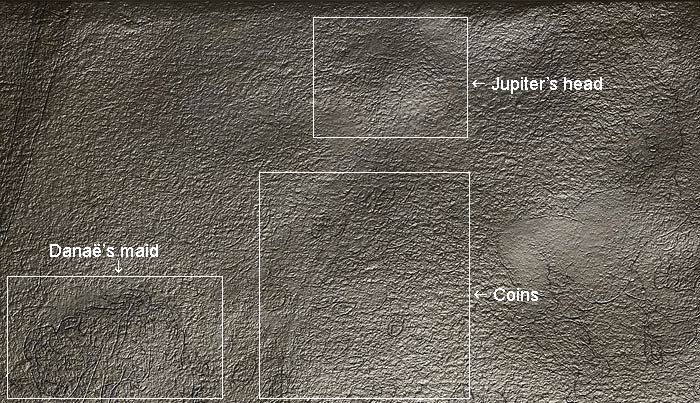This post was created by Lindsey Tyne, Sherman Fairchild Post Graduate Fellow in Paper Conservation.
Introduction
Until the nineteenth century it was common for works of art to be disseminated in the form of prints. But how was an artist's work transferred from paper to printing plate? In this online feature, we take a close look at a seventeenth-century drawing by the Dutch painter, draftsman, and printmaker Abraham Bloemaert (1564–1651) and the engraving derived from it. Using a specialized digital photographic technique known as Reflectance Transformation Imaging (RTI), conservators and curators uncovered physical evidence of the process by which engraver Jacob Matham marked Bloemaert's drawing, allowing the work to be transformed into another medium.
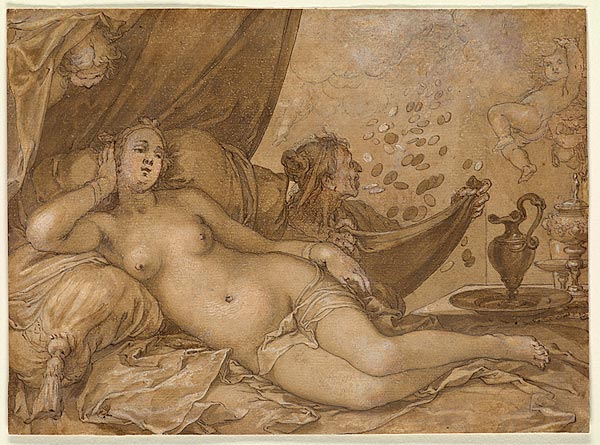
About the drawing
Bloaemart's drawing, probably made about 1610, illustrates the Greek legend of Jupiter and Danaë. According to the myth, an oracle foretold that King Acrisius of Argos would be killed by a male child borne by his daughter Danaë. In an effort to evade this fate, the king locked his daughter in a fortified tower. Jupiter, however, managed to gain entrance to Danaë's bedchamber disguised as a shower of gold coins. Impregnated by Jupiter, Danaë gave birth to Perseus, who went on to fulfill the prophecy by accidentally striking Acrisius with his javelin.
Explore Drawing Details
Danaë’s head
In order to transfer the artist's composition from paper to printing plate, engraver Jacob Matham traced the lines with a metal stylus. The RTI image, which captures three-dimensional details of the drawing's surface, documents the impressions the stylus made in the paper during this transfer process. The outlines of Danaë's head, facial features, hand, and arm are clearly visible.
The bedclothes
As engraver Jacob Matham traced Bloemaert's drawing with a metal stylus in order to transfer the composition to a printing plate, he provided the same care and attention to background details as he did to the figures. Here, for example, the RTI image documents the incised lines the stylus made on Danaë's bedclothes and the tassel on her pillow.
A cherub in the drapery
This detail shows an area of obvious difference between the drawing and the print. In the upper left of the drawing, the cherub's body is hidden by drapery. In the print, however, the cherub's arm is clearly visible as it holds back the curtain. The RTI image shows that engraver Jacob Matham fully inscribed this area of the drawing with a metal stylus to exactly transfer the composition to the printing plate. This shows that he changed the position of the arm after he transferred the composition but before he carved the plate.
The crowned head of Jupiter
This detail shows an area in which the engraver, Jacob Matham, enhanced Bloemaert's composition as he translated the drawing into printed form. In the drawing, Bloemaert made only a few strokes at the top center to indicate the head of Jupiter emerging from the clouds. In the print, however, Jupiter's head and crown are much more fully realized. In the RTI image, note how the incised lines Matham made with a metal stylus to transfer the drawing to a printing plate are very clear on the coins and the head of Danaë's maid at lower left but much less pronounced on Jupiter's head.
The transfer process
Matham most likely followed standard engraving techniques of the seventeenth century as outlined in William Faithorne's 1662 manualThe art of graveing, and etching: wherein is exprest the true way of graveing in copper.
The plate was first heated and coated with a thin layer of white wax. Next, a dry black transfer medium, such as black chalk, was rubbed onto the verso of the drawing. But there is no evidence of black chalk on the verso of Bloemaert's drawing, so Matham must have used an intermediary sheet of paper with one side coated in a black substance, much like old-fashioned carbon paper. The coated side was laid down on the waxed plate and then the drawing placed on top.
Next, the engraver inscribed the drawing by tracing the compositional lines with a metal stylus. Once fully inscribed, the coated transfer paper was removed, leaving a linear black image on the plate to be used as a template for engraving. Close examination of Bloemaert's drawing using RTI reveals incised lines throughout the entire composition that precisely follow his pen and ink lines, indicating that Matham transferred the image to the plate using a stylus firmly dragged over the drawing.
About the imaging process
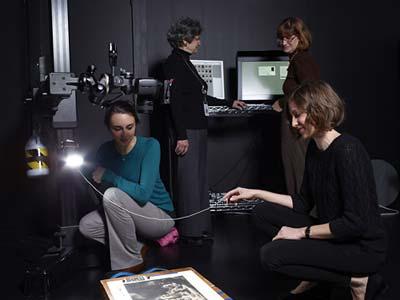
Conservators from the Thaw Conservation Center perform RTI image capture.
Conservators from the Thaw Conservation Center perform RTI image capture.[/caption]
Documenting the elusive three-dimensional features of a print or drawing is difficult. This is because what can be detected on its surface at any given time is dependent upon how it is illuminated. Typically, raking light, emitted from a source held parallel to the work's surface, is used to exaggerate disruptions in the surface of a sheet of paper or in the media, making it easier to detect subtle disturbances such as flaking in paint layers or the incised lines of drawings that have been traced with a stylus for transfer. When documenting these nuances using normal photography, the raking light is constrained to a single fixed position, often arbitrary, when it is captured by the camera. While helpful, the visual information transmitted to our eyes is literally one-sided and, therefore, limited.
With the recent development of a specialized digital photographic technique known as Reflectance Transformation Imaging (RTI) by Cultural Heritage Imaging, the static nature of raking light photography is eliminated. Using RTI, a series of digital images is captured in which the artwork is illuminated from a number of different angles. These images are then synthesized into a single digital file to create a highly detailed virtual topographic map of the artwork's surface that can reveal impasto, brushstrokes, dents, tool marks, scratches and other traces of the artist's hand. Physical characteristic of paper, such as its surface texture and watermarks, are also recorded.
The static raking light image of Bloemaert's Danaë Receiving the Golden Rain shows some indentations in the paper, but the RTI image is more revealing.
Using RTI, the conservators from the Thaw Conservation Center imaged Bloemaert's Danaë. When viewed in raking light the indentations are evident, but it is difficult to determine and accurately record the extent to which the drawing is inscribed. Imaging the drawing using RTI allowed closer examination. This technology revealed that the drawing was inscribed throughout the entire design, and not restricted to the principal figures as initially suggested. In this instance, RTI proved to be an indispensable tool in firmly linking this drawing with the engraving.
This post was created in conjunction with the exhibition Rembrandt’s World: Dutch Drawings from the Clement C. Moore Collection, on view January 20 through April 29, 2012, organized by Esther Bell, Moore Curatorial Fellow, Department of Drawings and Prints. The technical examination of the Bloemaert drawing was led by Lindsey Tyne, Sherman Fairchild Post Graduate Fellow in Paper Conservation. The RTI images were captured by Lindsey Tyne, Graham S. Haber, Senior Photographer at the Morgan, and Marine Jacquet, graduate conservation intern from the Pantheon-Sorbonne University (Paris I).















